For the longest time, I struggled with acne despite cutting out the obvious culprits, like dairy, chocolate, and potato chips. I replaced them with “healthy” foods, like whole grains, bananas, and rice, but still found myself breaking out constantly. When I first started researching the link between diet and acne, the root of my problems became crystal clear – too many carbs.
Do you find yourself breaking out after you eat french fries, chips, sweets, rice, pasta, or bread? Then you know exactly what I’m talking about.
Carbs trigger a waterfall of hormones to be released in the body that can all trigger acne.
In moderate amounts, carbs aren’t a problem – but in a world where carbs make up 50%+ of all calories, hidden sugars are in 68% of all foods, and eating every 3 hours is the norm, it’s not surprising to learn that nearly half of all Americans are diabetic or prediabetic.
If you have acne, this is the first place I would start in terms of modifying your diet to achieve clear skin. Most mild and moderate cases of acne I’ve seen are driven by excessive carbohydrate consumption, and even in some severe cases, cutting back on carbs is the magic pill for clear skin.
To understand why carbs cause acne, we need to take a look at the scientific link between carbs, your hormones, and acne.
Carbohydrates 101
Lets back up for a minute: what are carbs?
Carbohydrates, or carbs, are one of the three main macronutrients found in food, along with protein and fat.
Unless you’re in ketosis, which we’ll talk about later, carbs provide your body with the energy it needs to sustain itself throughout the day. They’re the human body’s main source of fuel.
There are three broad categories of carbohydrates:
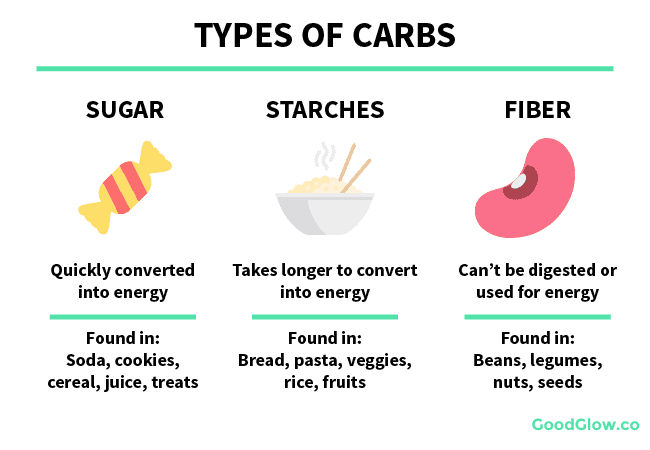
- Sugars: Carbs that are quickly converted into energy the body can use
- Starches: Carbs that take longer to be converted into energy the body can use
- Fiber: Carbs that your body can’t digest and therefore can’t use for energy (fiber’s main purpose is to improves the digestive system)
With the exception of fiber, your body breaks down all carbohydrates into usable energy called glucose. Glucose is used by your brain and your muscles to carry out their necessary functions. Unless you’re burning fat for fuel (ketosis), you need carbs to do just about anything.
But your body can’t run off “raw” carbs alone. They need to be in the form of glucose and properly stored for the body to be able to use it. Just like how a car can run off of gasoline but not raw oil, your body can run off glucose but not raw carbohydrates. That’s where the hormone insulin comes into play and our problems with acne begin…
Insulin & Blood Sugar 101
Your body uses insulin to help turn food into usable energy for the brain and body. Just like nearly every other hormone in the body, insulin isn’t inherently bad. It fulfills an important role in the body and is necessary for our survival.
Every time you eat a meal with carbohydrates in it, your body digests the food and sends glucose, the sugar found in carbs, into your bloodstream (also called blood sugar).
This glucose in the bloodstream triggers the release of insulin, which travels throughout the body and tells cells to absorb the glucose found in the blood. Some of the glucose is used by cells, and some of it is stored as glycogen for later.
All and all, the whole process looks a little bit like this:
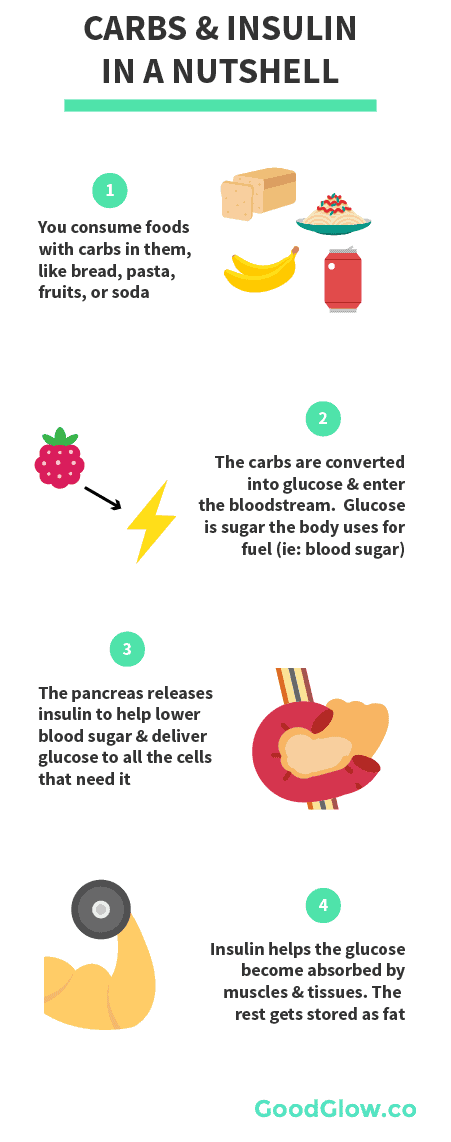
In a perfect world, this cycle goes on without a problem. The amount of insulin your body produces isn’t nearly enough to cause acne or other serious health issues like diabetes – but what happens when you consistently consume more fuel (carbs) than you end up using?
That’s where we run into problems.
Enter Insulin Resistance: A Nightmare for Acne
Imagine that you’re filling up your car with gas. Your tank is full, but you keep going anyways. What happens after a while? Well, the gas starts to flow out of the tank and all over your shoes.
Now imagine that you consistently eat more carbs than your body needs. Your tissues are packed to the brink with glucose (fuel), but you decide to eat a sugary cupcake anyways. Your bloodstream gets filled with even more glucose and your blood sugar rises.
So, what does your body do?
It releases insulin, just like it’s supposed to. But guess what? Your cells don’t need more glucose. They’re already full! In order to get your cells to absorb the glucose, your body needs to pump out even more insulin to get the same job done. This is the beginning of insulin resistance.
Later in the day you eat some pasta for dinner and you run into the same issue: but this time it’s even worse. You haven’t sufficiently burned off the access glucose in your cells, and there’s still some sugar in the bloodstream from earlier. Now your body has to work extremely hard to move any of this glucose around, so it releases a TON of insulin.
Guess what happens the next time you eat carbs? Even more insulin needs to be released. Pretty soon your body needs to release massive amounts of insulin just for any dent to be made in blood sugar levels.
This vicious cycle is insulin resistance, and it leads to a wide array of health issues, including acne. Because of this many people have to begin taking medications, like Metformin, in order to keep their insulin levels in a normal range.
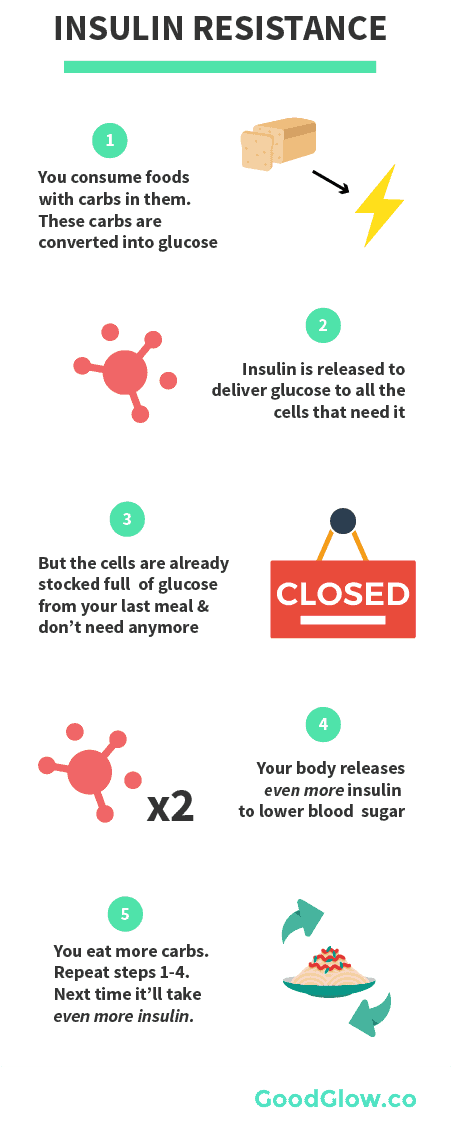
How Insulin and Insulin Resistance Cause Acne
Now that we know what insulin resistance is, it’s time to learn why it causes acne.
We already know that insulin is a hormone that helps glucose get properly absorbed by the body, but insulin doesn’t act alone. Insulin is a master hormone that triggers the release of several other hormones throughout the body.
Many of these insulin-triggered hormones are behind the root causes of acne.
Acne-Causing Hormone #1: Insulin-like Growth Factor 1 (IGF-1)
IGF-1 is one of the single most important hormones when it comes to acne. IGF-1’s main role is letting your body know how many new cells to create. It’s a growth hormone – it regulates the rate at which the body creates new cells and replaces old ones.
If you’re looking to bulk up, gain muscle mass, or recover faster from workouts, IGF-1 is actually a good thing. A lot of bodybuilders will supplement with IGF-1 for this reason (part of the reason many bodybuilders struggle with acne).
For your skin, IGF-1 is generally a bad thing. IGF-1 triggers your body to produce a ton of new skin cells. These skin cells are created far beneath the surface of the skin and slowly rise up over 30 days. When this big batch of skin cells reach the surface of the skin, they compete for space and resources and end up actually blocking the pore. This blocked pore is the perfect breeding ground for infection and inflammation to take hold and acne to form.

IGF-1 also triggers other hormones that tell our skin to produce more sebum oil. Sebum oil can easily become oxidized (damaged) and clog pores. Worse yet, IGF-1 actually decreases our ability to handle oxidative stress. When the oil (sebum) on the surface of the skin becomes oxidized, it becomes a pore-blocking powerhouse. We need antioxidants to prevent oxidation from occurring, and high levels of IGF-1 actually decreases our body’s ability to fight oxidation (R). So not only does IGF-1 trigger more skin oil to be produced, but it also hinders our ability to prevent this oil from becoming oxidized and blocking pores.
We have scientific evidence to support IGF-1 being correlated to acne.
Just like insulin, the key to IGF-1 is balance. You need some IGF-1 to properly function, grow, and repair, but not too much where you’re producing tons of unnecessary skin cells. The problem in today’s world, consuming tons of carbs and dairy is the norm, so we’re constantly producing way too much IGF-1 for our own good.
Acne-Causing Hormone #2: Insulin-like Growth Factor Binding Protein-3 (IGFBP-3)
IGFBP-3 controls how quickly your skin cells die off and get replaced. High levels of IGFBP-3 causes skin cells to stick to each other and form rough scales on the surface of the skin. These scales then end up blocking the pore from the outside air, making it prone to infection and inflammation.
Combine IGFBP-3 and IGF-1 together and you get a pretty nasty combination: too many skin cells are being produced, they stick to each other on the surface of the skin, and they’re not being shed fast enough. The end result is that you have a ton of dead, rough, scaly skin cells that can easily clog pores.
Hormone #3: Interleukin 1 Alpha (IL-1 Alpha)
IL-1 alpha has been shown to promote inflammation and contribute to acne – so when the pore does become blocked and infected from IGF-1 and IGFBP-3, IL-1 helps turn it into an inflamed, red, angry pimple.
Summing It Up
The end result is that insulin and the hormones it triggers plays a role in every step of acne formation.
- IGF-1 and IGFBP-3 blocks pores
- IGF-1 increases oil production
- IL-1 and IGF-1 promotes inflammation
We’ve covered how carbs trigger insulin, which in-turn fires off a bunch of other hormones that cause acne. Now it’s time to dig into the specific strategies you need to know in order to prevent insulin-driven acne.
Not all Carbs Are Created Equal
At this point you might be wondering whether or not you can ever have carbs again: don’t worry, I’m not suggesting that you totally give up cookies or french fries.
Many carbohydrate-heavy foods are safe for your skin and perfectly healthy. Remember, carbs aren’t the problem, it’s the hormones that they trigger (insulin, IGF-1, etc.) that are. Not all carbs are created equal – some elicit a much larger hormonal response than others. That’s why the key for clear skin is to:
- Consume the right type of carbs (low-GI)
- Consume the right amount of carbs (usually under <150g)
Let’s start with consuming the right type of carbs: the ones that don’t trigger much insulin.
The Glycemic Index (GI)
Not all carbs are created equal: remember, our main goal is to avoid the overproduction of insulin. The body produces different amounts of insulin for different types of carbohydrates.
The glycemic index is a ranking system that helps you identify the foods that spike your blood sugar the most and in theory trigger more insulin to be released. Remember: more insulin = more acne.
Carbs found in some foods are digested at a much slower rate than others and are converted to glucose over the course of a couple hours. Because of this, they don’t spike your blood sugar nearly as much as other foods and therefore don’t require as much insulin. These sources are what we call low glycemic index foods, and they’re usually a lot better for your skin than other carbs.
On the other hand, high glycemic index foods rapidly spike blood sugar levels and are quickly digested by the body. Pound-for-pound they usually trigger a much larger insulin response than low glycemic foods.
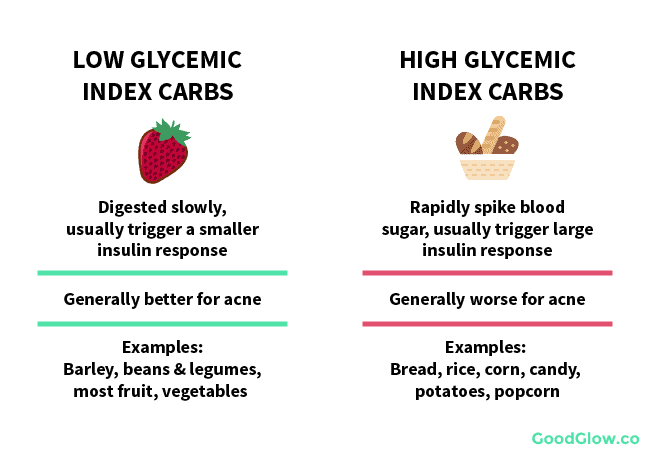
You’ve probably experienced the difference between low and high glycemic index foods before: you can eat all the berries and vegetables in the world and not feel bloated or tired after, but if you load up on rice, pasta, or cookies, you’ll crash almost right away. That’s insulin and the glycemic index at work.
Remember, we want to avoid insulin spikes, so try to stick to foods that are generally low in GI. For acne, that likely means avoiding large consumption of foods with a GI above 65.
Here’s a quick look at the glycemic index of some common foods:
| Food | Glycemic Index |
|---|---|
| White bread | 75 |
| White rice | 73 |
| Brown rice | 68 |
| Sweet corn | 52 |
| Spaghetti | 49 |
| Cornflakes | 81 |
| Popcorn | 65 |
| Instant oat porridge | 79 |
| White potato | 78 |
| Sweet Potato | 63 |
| Apple | 36 |
| Orange | 43 |
| Banana | 51 |
| Pineapple | 59 |
| Watermelon | 76 |
| Blackberry | 25 |
| Strawberry | 41 |
| Full-fat Milk | 39 |
| Ice cream | 51 |
| Chickpeas | 28 |
| Kidney beans | 24 |
| Lentils | 32 |
| Soda | 59 |
But the glycemic index is only half of the equation. If you’re eating high GI foods but in small doses, then is it really that bad? That’s where the glycemic load comes in.
The Glycemic Load
There are some foods out there that have a pretty high glycemic index but don’t have many total carbs in them. In other words, they’ll trigger a rapid but small insulin spike because there just isn’t that many carbs to deal with. Rutabagas, beets, oranges, and pineapples are great examples of this.
So should we listen to the glycemic index and never eat these foods even though they don’t have that many carbs?
That’s where the glycemic load comes into play.
Some foods happen to have a lot more carbs per-serving, so even though they have a low GI, they still trigger a large insulin response because there are just so many carbs in them. These are foods with a high glycemic load.
On the other hand, some foods can quickly spike your blood sugar but don’t have a lot of carbs to begin with – so no matter how rapidly they cause blood sugar levels to rise, it still won’t generate enough glucose to do any real damage. These are foods with a low glycemic load.
Calculating the glycemic load for a given food is simple – Glycemic Index * Carbs per serving
Just like the glycemic index, the glycemic load is used to estimate the jump in blood sugar a food is likely to cause. Just like GI, we’re looking to stick to low glycemic load foods.
Here’s a brief table of some common foods and their glycemic load.
| Food | Glycemic Index | Serving Size | Net Carbs | Glycemic Load |
|---|---|---|---|---|
| Blackberries | 25 | 1 cup (144g) | 6.2g | 1.6 |
| Strawberries | 41 | 1 cup (152g) | 8.7g | 3.6 |
| Full-fat Milk | 39 | 1 cup | 11.7g | 4.6 |
| Orange | 43 | 1 orange (131g) | 12.3g | 5.3 |
| Kidney beans | 24 | 1 cup (177g) | 28.3g | 6.8 |
| Chickpeas | 28 | 1 cup (164g) | 26.4g | 7.4 |
| Apple | 36 | 1 apple (182g) | 20.7g | 7.5 |
| Watermelon | 76 | 1 cup (152g) | 10.9g | 8.3 |
| Lentils | 32 | 1 cup (198g) | 28.3g | 9.1 |
| Sweet corn | 52 | 1 cup (164g) | 20.2g | 10.5 |
| Pineapple | 59 | 1 cup (165g) | 19.3g | 11.4 |
| Banana | 51 | 1 banana (118g) | 23.9g | 12.2 |
| Popcorn | 65 | 30g | 18.9g | 12.3 |
| Ice cream | 51 | 1 cup | 30.3g | 15.5 |
| Cornflakes | 81 | 1 cup (30g) | 23.5g | 19.0 |
| White bread | 75 | 2 slices (54g) | 26.2g | 19.7 |
| Sweet Potato | 63 | 1 potato (180g) | 31.4g | 19.8 |
| Spaghetti | 49 | 1 cup (140g) | 40.8g | 20.0 |
| Soda (Cola) | 59 | 1 can (12 oz) | 35.2g | 20.8 |
| White rice | 73 | 1 cup (158g) | 40.0g | 29.2 |
| White potato | 78 | 1 potato (173g) | 32.9g | 25.7 |
| Brown rice | 68 | 1 cup (202g) | 48.5g | 33.0 |
| Instant oat porridge | 79 | 1 cup (81g) | 46.6g | 36.8 |
Overall, sticking to low glycemic load foods will give you a huge advantage when it comes to avoiding insulin spikes. I recommend using both the glycemic index and the glycemic load to make dietary decisions. Some people are extremely sensitive to high-GI foods, while others really only need to worry about the glycemic load.
A Note On Dairy
Just looking at the glycemic index and glycemic load tables above, it might seem like dairy would be a great choice for insulin-sensitive individuals.
Dairy is a unique case. In Unmasking Acne, I explain why dairy isn’t a free pass when it comes to insulin:
Dairy, unlike many other foods, contains particular proteins (casein, whey) in addition to carbohydrates (lactose) that spike insulin. It appears to be insulin-safe but really is quite problematic. Beef protein, for instance, isn’t very insulinogenic. But casein and whey, two of the primary proteins found in dairy, along with lactose, the primary carbohydrate found in dairy, create the ultimate trigger for insulin production.
One study found that meals with dairy elicit much larger insulin responses than meals without dairy, another found that milk generated a higher insulin response than white bread, a food with one of the highest GI’s.
| Food | Glycemic Index | Glycemic Load (per 100g) | Insulin Index |
|---|---|---|---|
| White bread | 75 | 48 | 100 |
| Milk | 27 | 2 | 90 |
| Yogurt | 27 | 6 | 115 |
| Ice Cream | 61 | 15 | 89 |
Because it’s the protein, not necessarily the carbs in dairy that trigger the insulin response, higher-protein dairy products are generally problematic for people with acne, including milk, yogurt, and cheese.
Butter is generally less problematic because it doesn’t include a lot of whey or casein, and ghee butter can actually be good for your skin because it contains almost no lactose, casein, or whey.
In addition to these factors, most dairy has several other attributes that make it extremely problematic for acne. For more on dairy, read my in-depth article here.
Your Carb Strategy: How Much to Eat and How Often
At this point, you may be thinking, “Well, I can never enjoy high-GI carbs again, goodbye pasta/pizza/cupcakes.”
Rest easy my friend, most people can tolerate high-GI foods just fine in moderation. While some people may actually benefit from cutting out almost all carbs, most people will find a moderate carbohydrate diet to be more than enough for clear skin.
The next logical question is exactly how many carbs you should be eating for clear skin.
How many grams a day should I eat?
While your ideal carb intake varies depending on factors like physical activity, sleep, and genetics, a good starting point for active individuals looking to achieve clear skin is less than 150 grams per day.
If you compare that to The Dietary Guidelines for Americans you might be surprised. The US recommends that Americans consume 225-325 grams per day – should you really be consuming half the amount recommended carbs?
Trust me, the US recommendation is way out of line with what the average American needs, even if you exercise regularly. The Institute of Medicine performed a comprehensive study on how many carbohydrates the body needs on a daily basis, and they came to the conclusion that 130 grams per day are ideal for adults and children (R).
Not only that, but we have mounting scientific evidence that non-westernized cultures who consume a fraction of the carbohydrates we do have little to no signs of acne. Meanwhile, our carb consumption is higher than ever and so are rates of acne, insulin resistance, and diabetes. Coincidence? I think not.
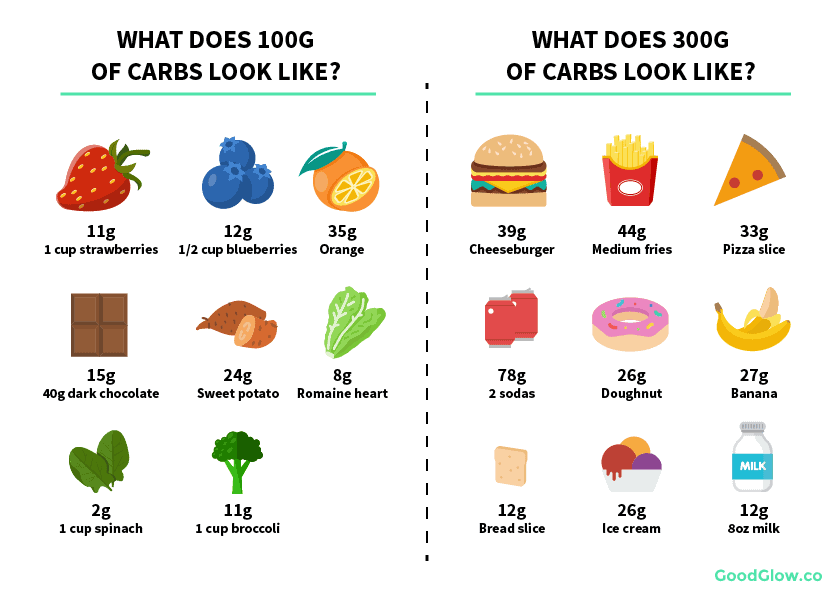
Trust me, it might not seem like it, but you’ll probably feel better consuming fewer carbs. Right now your blood sugar is like a yo-yo, you constantly need to consume carbs to feel awake and alert. When you get your insulin resistance under control and consume only the amount of carbs you really need, your entire body will thank you for it.
It’s also worth noting that when your body runs out of glucose from carbs, it doesn’t just stop functioning – it transitions to burning fat for fuel (yes, eating fewer carbs and more fat means that you burn more fat). This state is called ketosis, and it can be great for your overall health and skin.
Throughout history, the human body would go in and out of this fat-burning state all the time, but with insulin resistance and low rates of activity, we rarely burn fat for energy anymore. When you deplete the glycogen stores in your muscles through exercise, you’re giving your body the chance to truly absorb the glucose from carbs the next time you eat. Instead of increased insulin resistance, we have increased insulin sensitivity – your body needs to use less insulin to get the same amount of carbs stored – but it can’t do that if you’re constantly stocked up on carbs. That’s why finding your ideal carb intake is crucial for clear skin.
What about low-carb/Keto?
Because I touched on it above, I feel obligated to at least mention that perhaps the fastest way to eliminate insulin-driven hormonal acne is by adopting a low-carb or ketogenic diet. Again, in my book I reference two studies that show how keto or low-carb directly combats two of the root causes of acne:
One comprehensive study on the effects of the ketogenic diet found that insulin resistance dropped by upwards of 75% after just two weeks of eating a low-carb diet (Boden).
Keto not only reduces insulin spikes which trigger hormonal acne, but it also reduces inflammation (Gu).
That’s right, after just two weeks of eating a low-carb diet insulin resistance was nearly eliminated.
I don’t recommend jumping into keto right away if you’re not ready for it or are consuming 300 grams of carbs per day, but if you’re maybe in the middle-zone of carb consumption and looking to take your clear skin diet to the next level, check out our article on mistakes to avoid while doing Keto for Acne.
How to find your ideal carb intake
Let’s face the facts – if you’re like most Americans, your whole life has been filled with eating carbs around the clock. Pizza, pasta, crackers, bread, and french fries were staples of my childhood, and I’m sure they were for you too. Unfortunately, this lifetime habit of carb-binging doesn’t come without consequences, mainly insulin resistance.
So, what do you do?
First, we need to tackle insulin resistance head-on. You need to flush out all that stocked up glucose you still have in your body. You need to get your cells back on track and absorbing carbs like a healthy individual – only then can you really know how many carbs you should be eating on a daily basis.
How should you do this? Here’s a simple three-step process that only takes about a week:
- Cut the carbs: Aim to eat 50g a day or less for a few days
- Move – Engage in 30+ minutes of moderate exercise a day
- Listen to your body – When you feel physically fatigued doing simple activities like walking upstairs or jogging, take note: this is when you may have depleted your glucose and glycogen
At this point, you’ll hopefully have your blood sugar under control and glycogen stores running on empty. You’re finally ready to carb-up, but you need to be cautious – this isn’t an excuse to eat a
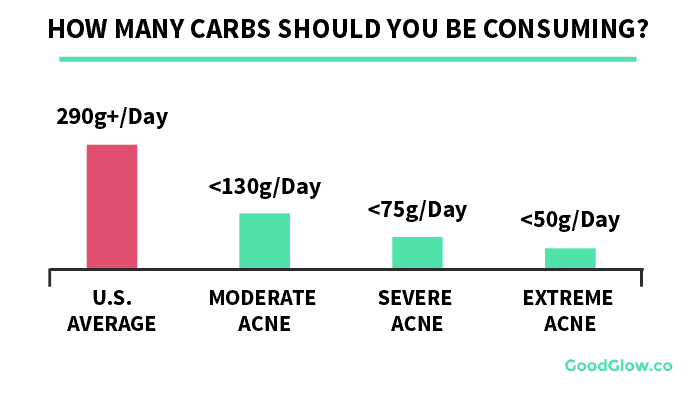
whole pizza. Remember the glycemic index and glycemic load? Try to eat low GI and low glycemic load foods.
Look to eat about 150g of carbs the next day, and then see how you feel. Then, the day after your carb refeed, start low and work your way up. I personally started at about 40g of carbs a day, then found my optimal intake to be around 75g per day. This number can vary widely, so listen to your body.
Are you physically exhausted when you do simple physical activities? Are you mentally slow all day? Then you may want to consider upping your carb intake slowly and with healthy foods like fruit or sweet potatoes.
Are you always tired after meals? Do you find yourself having to eat constantly? Then you may want to consider reducing your carb intake.
Note: I recommend tracking your food intake for a few days using an app like Cronometer to ensure you’re in the ballpark.
Play around with it and listen to your body – do high GI carbs make you break out and feel tired? Can you eat all the low GI fruits you want, but you need to avoid chocolate? Does anything over 100g a day trigger acne? Experiment, refine, and tweak.
Summary – Diet, Carbs, Insulin, and Acne
- When you eat carbs your body releases the hormone insulin
- Insulin triggers the release of several other hormones, IGF-1, IGFBP-3, and IL-1
- IGF-1, IGFBP-3, and IL-1 cause acne by increasing oil production, blocking pores, and triggering inflammation
- Foods with high glycemic index (GI) and glycemic load values trigger more insulin than foods with low GI’s
- Dairy also triggers a large insulin response because of the casein and whey found in most dairy
- Most people eat way too many carbs
- Eating ~100g of low-GI carbs per day is a good starting point for most people
Other Factors For Insulin Resistance
Your diet is 90% of the fight against insulin resistance. For many people cutting out high-GI foods is enough to make a huge difference in their skin, but for others, it might take a little more work.
There are a few simple lifestyle tweaks that can drastically improve your insulin sensitivity with minimal time and effort.
Strategy #1: Fasting
I know, I know, you’re probably sick of reading about intermittent fasting, but several studies have shown that it’s truly one of the most effective ways to reduce insulin resistance and maintain healthy blood sugar levels.
Even just skipping a single meal and doing a 16:8 fasting schedule (fast for 16 hours per day, eat for 8) has been shown to help in this regard, and when you combine intermittent fasting beneficial effects on other aspects of your health, including inflammation and sleep, stress, and it’s no wonder that it’s one of the best overall things you can do for your skin.
Check out our full guide to intermittent fasting for more details.
Strategy #2: Exercise
How much of your day is spent sitting down in front of a computer or staring at your phone? If you’re like most Americans, you likely spend over half your waking hours sitting, laying down or lounging around (R). That’s half our waking life spent doing practically no physical activity. Our lifestyles are dramatically less active than previous generations.
Think about what causes insulin resistance for a second – simply put, your body has more fuel than it can burn. When you get active and move, you use up the glycogen in your cells so that the next time you eat carbs actually get properly absorbed.
This means that it’s not hard to dramatically curb your insulin resistance by incorporating a few minor changes to your exercise and daily routine – you don’t have to spend days in the gym. Less is more when it comes to insulin resistance – go for higher intensity workouts whenever you can:

- Running – Sprints or shorter distances are ideal, as endurance running can increase cortisol production which leads to acne
- Yoga – Not only does yoga fight insulin resistance, but it also lowers stress and cortisol levels also great for lowering cortisol levels and a plethora of other health benefits that help you beat acne. It might not be as beneficial as intense cardio or weightlifting, but it’s much better than nothing.
- Walking – Studies show that just 30 minutes a day of walking at a moderate speed can significantly lower insulin resistance. (R)
Strategy #3: Stress Reduction
Have you ever felt yourself getting a “stress pimple”? That’s because in addition to the production of cortisol, stress causes insulin resistance – a double dose of trouble for acne-sufferers (R).

Avoiding stress is a must for anyone suffering from acne.
So, what can you do to beat stress? The first step is to eat well and exercise. When you take care of your body, your mind will naturally relax, but if you find yourself still stressed, here’s a few techniques that can stop it in its tracks:
- meditation – Mindfulness meditation was a huge asset in my fight against acne. Lower cortisol levels, less anxiety, less stress. I wrote an in-depth article looking at all the benefits of meditation for acne here
- Yoga – In addition to directly decreasing insulin sensitivity, yoga also decreases cortisol levels (R)
- Cold showers – Yes, although it sounds terrifying, a cold shower can help increase your resistance to stress, not to mention several benefits for fighting acne
Strategy #4: Supplements, Tips, and Tricks
In the GoodGlow.co Supplements Guide, I recommend a few supplements that not only decrease insulin resistance, but also help fight inflammation, improve gut health, and heal acne scars.
In addition to supplements, there’s a handful of other random little tidbits that can be helpful for fighting insulin resistance:

- Get some sunshine – Research suggests that there’s a pretty strong link between vitamin D levels and insulin resistance. Try to get some sunshine every day or take a high-quality vitamin D supplement
- Drink Apple Cider Vinegar – Vinegar, lemon juice, and cinnamon have been shown to improve insulin sensitivity when consumed prior to meals
- Ditch sweetened drinks – Juices, sodas, and sports drinks are loaded with enough sugar to trigger massive insulin spikes. Even some diet drinks can signal to your body that glucose is on the way and cause insulin secretion.
- Eat slower – Space out your meal more and give yourself time to truly ask yourself if you’re full
Putting it all together
The evidence is pretty clear: more insulin means more acne.
Despite this, I want to make something clear – carbs aren’t evil.
You don’t need to avoid carbs altogether or never enjoy your favorite comfort foods again. Telling yourself you’ll never eat pizza again can be really psychologically challenging. The key is moderation and discipline when it comes to carbs.
If you’re looking for a quick-and-easy way to know what carb sources are ideal for acne, I’d recommend downloading the free GoodGlow Diet Blueprint. This one-page guide factors in all the elements we talked about for safe carbohydrate consumption, including the glycemic index, glycemic load, and anomalies like dairy.

Remember, drastically improving insulin sensitivity doesn’t have to be hard. Try following these rules for a week and seeing if your acne improves. If it does, carbs are likely the culprit. Stick with it and keep experimenting:
- Eat less than 125g of carbs per day
- Avoid foods with a GI of over 65
- Cut out all dairy except butter & ghee (just for a week)
- Exercise at least twice a week, move (walk, jog, stretch) every day
- Get some sleep – aim for at least 7 hours a night
Frequently Asked Questions
No, not all carbs cause acne. Refined carbohydrates with a high glycemic index are most likely to cause an insulin spike, which triggers skin inflammation (including acne) in many people.
Yes, low carb diets that remove sugar, dairy & processed foods have helped many people clear up acne, blackheads, and scarring.

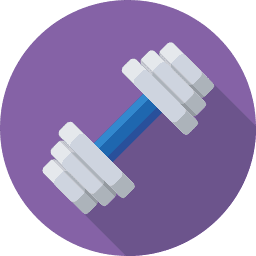
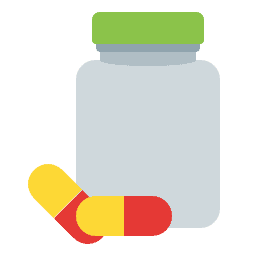

Hi Sam! I’m really in love with this article, it has to be the best one I’ve seen yet about diet and acne as it covers all the bases into one.
I downloaded your free diet blueprint and I want to know why rice is considered safe? I workout 3x a week so I need to consume many calories, but I had considered rice ‘unsafe’ so I only eat a little of it daily.
All the best,
Gordon
Hi Godron, thanks for the comment!
This is a really great question, and one I’ll be writing a full article about soon.
In a nutshell, rice is a better (but not perfect) alternative to other grains and carb sources (grains, quinoa, white potatoes, legumes, brown rice, etc.) for a few reasons:
Overall, white rice is a pretty safe carb source for people who need a certain level of carbs to function. Not all of us have the desire or should do a low-carb/ketogenic diet and need something like white rice or sweet potatoes to help give us energy.
Although it still has a high glycemic index, and will still spike insulin/IGF-1 levels if eaten in high quantities or without satiating protein or fat to go with it. I don’t advocate for eating tons of white rice, especially if you think you have insulin resistance, but on the flip-side I do understand that many people, including active folks like yourself, will benefit from moderate consumption of carbs.
For these reasons, if you’re going to eat carbs, white rice in moderation is about your safest bet.
Hope this clears things up!
Sam
Thanks so much Sam … I didn’t know there was so much to know about rice! Thank you for being so informative!
Now I know there are many factors that go into why you ranked the foods that way in the chart! That’s great, I’m going to try eating with more consideration to it for the next year and see how my skin reacts.
Sounds great, Gordon, I’m looking forward to hearing how it goes!
Remember, everyone’s body is different and unique, there is no one-size-fits-all when it comes to diet and acne.
Listen to your body, and pay attention to what foods make you feel great and what foods make you break out.
Best wishes!
Great article! Thank you for the precise description about carbs-insulin-hormones-acne
I found last year that when I’m eating only a lot of veggies, good fats and protein, my skin gets good, no acne/no oilyness. I’ve eaten carbs during the last time and broke out. If I eat carbs, I have to eat low glycemic carbs and in a cycling way, not consistently
Hi Michael!
Thanks for the comment!
I found the exact same thing to be true – for quite some time eating practically ANY carbs led to me breaking out. After a lot of intermittent fasting and low-carb eating, I’m now lucky enough to be able to eat some carbs on an infrequent basis and not break out, but it certainly took a while!
A lot of people find a cyclical ketogenic diet (eating carbs once or twice a week) or a slow-carb diet (eating low-glycemic index foods) to be an effective way to get the benefits of a low-carb diet without cutting out every carb under the sun. We all have cravings from time to time!!!
Hey Sam!
I really appreciate this article, it looks like you took your time evaluating each food with science and investigation.
I have 2 doubts:
My problem is that I exercise regularly and need carbs to get energy, considering that I am not following a keto diet. My question is, what are the bests low gi carbs to eat?
Also, why is corn considered unsafe? I eliminated gluten and wheat from my diet, so corn flour and corn itself is my alternative. What can I do?
Hey David!
Super sorry on the extremely delayed response – I hope this message finds you okay!
To answer your questions:
1. What carbs are safe for your skin?
This is tricky, and I want to emphasize something – everyone is different, and certain people will have different biological reactions to different foods – you need to test around and see what works for you!
In general, though, I would recommend the starting with the following carb sources:
Some people find they can tolerate brown rice and pre-soaked, properly prepared legumes as well – if you fall into this camp, I would highly recommend legumes. You can see my full article on them here.
Also, you may want to consider going keto – I know, I know, if you have certain workout goals, it may stall your progress for a while, but it can have a huge impact on your skin.
2. Why is corn considered unsafe?
Again, this falls into a similar camp – you might be able to handle corn just fine, but for most people, corn is problematic because it’s extremely difficult to digest. Corn contains a certain compound called zein, which actually acts on the body like gluten would – by damaging the lining of the gut and causing permeability, which can lead to inflammation, one of the largest root causes of acne. All and all, the lectins (plant proteins) found in corn aren’t all that different than gluten, which may cause issues.
Again, playing around here is key – if you handle corn just fine, then go for it! Otherwise, you might want to look into alternatives like coconut or macadamia nut flour.
I’ve eliminated Wheat and Gluten, and Corn, but I do really well on Gluten Free Oats.. .. worth trying.. just don’t add fat to them if you make porridge etc.
Is olive oil safe when struggling with acne? I cant figure out if its oilive oil thats making my acne worse. Oil does make my skin more oily for sure, but I dont know if its causing more acne.
If I combine Olive oil with Carbs i get acne.. I can eat a plate of white rice, and have clear skin and feel fine,, if I add olive oil or any other fat, I feel bloated and instantly break out.
Very good and informative article. Never knew white rice is actually a better choice. Can you clarify on whether this applies for all “types” of white rice? basmati, jasmine, sushi rice, etc?
Sadly I came to the conclusion in this article myself after years and years of trial and error and struggle.
There are a few things I want to add;
1. It’s important to figure out what your NET carbs are, since fiber isn’t digestible, it doesn’t contribute to your overall carb intake.
2. From PERSONAL experience, I find that fermented dairy products do not affect me, even in copious amounts; this means yogurt, and cheese.
3. Like briefly covered in the article; It’s worth noting that you should try to consume equal amount/more fat or protein when you occasionally have “bad” carbs. Since this significantly lowers the GI of the high GI food, but of course, there is still GL that requires consideration, so if GL affects you, this is something you should still be careful of.
Hi sam. Im 5’10” and my weight is 125. I want to gain some weight fastly without having an acne by eating high calories food. What would you recommend?
Will vegan protein powders (Vega sport protein) also increase IGF-1 or any other hormones in our body and make us susceptible to acne ?
I have spent two years on Keto – I started it to lose 50 lbs but stayed with it because I felt FANTASTIC. I’ve been maintaining the weight but do allow a little bit of cheating (cycle keto). While on pure keto my acne I’ve had for years almost completely disappeared, but lately it’s come back. While it is partly from a sweaty, hot summer, it just cross my mind today that maybe carbs had something to do with it – we were on vacation for a week and I allowed myself time to indulge. Good ole Google led me to this article – this was SO helpful. Thank you!!
I can eat fat and protein together no issues, Carbs and protein no issues,, Carbs on their own, no issues,, but mix fat with carbs, boom break out.
Just a quick question. Based on your method do I subtract the fiber carbs from the total carbs? Or do you include it in your charts of how many carbs to consume?
Hi Emma!
Great question – you can subtract fiber from carbs, as fiber does not trigger an insulin response (and thus doesn’t have a significant impact on this particular type of acne).
I only get acne break outs when I combine fat with Carbs. Carbs by themselves are fine, Fat and protein is fine, protein with Carbs is fine.. it’s only Carbs with Fat,., If we look at nature, there is no one food that is high in Carbs and fat in the same proportions.. Meat is either high in fat , lean high in protein or high in both. Peanuts are high in fat and protein, I can eat nuts and nut butters by them selves and they are fine, I can eat fruit, bread, legumes, grains etc by themselves or with other carbs and I’m fine. If I eat Nut butters with any carbs, boom ,break out.
So I’ve always been skinny my whole life and recently I’ve wanted to bulk up and I need everything you mentioned such as loads of carbs I’m 15 so acne has been hell for me Nd I’ve cleared it up so I now have PIE and now that I’m breaking out due to me bulking idk what to do I hate being insecure about my skinny body and my face so I’m going to ruin my face doing so. Probably when I cut I’ll introduce my usual diet of low gl again also ima avoid dairy my whole bulking phase so that’s a W anyways wish me luck.